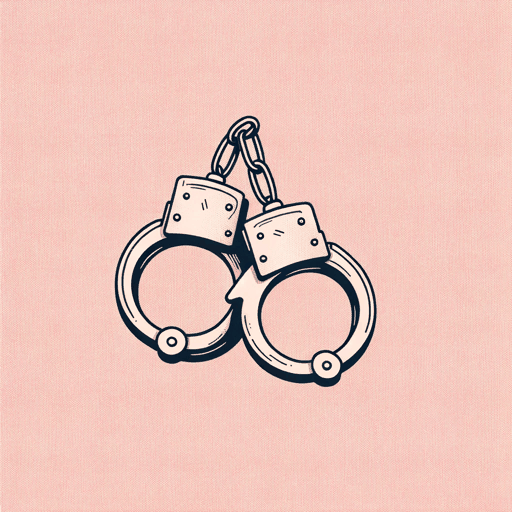52 pages • 1 hour read
E. L. DoctorowThe Book of Daniel
Fiction | Novel | Adult | Published in 1971A modern alternative to SparkNotes and CliffsNotes, SuperSummary offers high-quality Study Guides with detailed chapter summaries and analysis of major themes, characters, and more.
Summary and Study Guide
Overview
The Book of Daniel is a 1971 semi-historical novel by American author E. L. Doctorow. The novel is loosely based on the true story of Julius and Ethel Rosenberg, who were executed in 1953 by the United States government after being accused of espionage on behalf of the Soviet Union. In the novel, the Rosenbergs are replaced by the fictional Isaacsons. Doctorow received many prestigious awards for his historical fiction, including the National Book Award for 1986’s World’s Fair and the PEN/Faulkner Award for Billy Bathgate and The March. The Book of Daniel was adapted as a 1983 film, Daniel.
This guide uses the 2006 Penguin Classics edition of the novel.
Content Warning: The Book of Daniel and this guide contain discussions of suicidal ideation, an attempt to die by suicide, and incestuous fantasies.
Plot Summary
Daniel Isaacson is the narrator and protagonist of The Book of Daniel. His biological parents, Paul and Rochelle, were executed by the United States government after being accused of espionage on behalf of the Soviet Union. Daniel has grown up to become a student at Columbia University. By 1967, he is writing a dissertation about the American Old Left movement in the United States, of which his parents were a part. The novel includes sections of Daniel’s dissertation, as well as contemporary events, Daniel’s childhood memories, and stories about his parents’ arrests and executions. The story is told in a nonlinear fashion as Daniel writes his dissertation. As well as Daniel’s dissertation, the narrative also uses letters, historical research, and newspaper articles to flesh out the story. The main narrative of the story is interspersed with fragments from Daniel’s past. As well as historical elements, Daniel occasionally speculates about what might have happened to his parents.
The contemporary story begins in 1967 when Daniel is a graduate student. He is married to Phyllis, and they have a young son named Paul. Daniel chose the name Paul in memory of his dead father. On Memorial Day, the small family goes to see Susan, Daniel’s sister. Susan recently tried to die by suicide. Robert and Lise Lewin, who adopted Daniel and Susan after their parents’ executions, go with Daniel and his family. Daniel is occasionally cruel and sadistic in his treatment of his family.
Like his biological parents, Daniel is interested in left-wing politics. His dissertation allows him to confront the legacy of his parents’ actions; he hopes to come to terms with whether they are actually guilty. When he meets a famous political activist named Artie Sternlicht, Artie explains the failure of his parent’s generation to bring about revolution. Daniel comes to believe that his parents damaged the left-wing movement in the United States. He is prompted to conduct more investigations into the truth about his parents’ beliefs.
In October 1967, Daniel and his family attend a protest at the Pentagon. Daniel is embroiled in a confrontation with the police. He visits California at Christmastime, hoping to talk to an old family friend named Selig Mindish. Selig’s testimony was vital in his parents’ trial, leading to their condemnation. He meets Selig at Disneyland but, to his surprise, Selig has become senile. He remembers nothing, though he recognizes Daniel enough to greet him. Back east, Susan dies by suicide some time after her electroshock therapy, though the moment of her death is never explicitly portrayed. Daniel returns for her funeral and to finish his dissertation. As he writes, however, he finds himself interrupted by the loud protests by the Columbia students. During the protest, Daniel is invited to put aside his work and join the other students. Daniel, remembering a quote from the Old Testament, puts down his research and steps outside to join the protest.
Daniel imagines his family history from his parents’ perspectives. Rochelle was the daughter of an immigrant. She married Paul Isaacson, and the couple had two children, Daniel and Susan. Paul and Rochelle were politically active, joining the Communist Party. They were poor but intelligent, Daniel claims; they were proud and assertive about their politics. When the United States government began to target communists, the paranoid atmosphere in society led to people like Selig Mindish being arrested. The Federal Bureau of Investigation (FBI) paid regular visits to the Isaacsons’ New York home. Paul was arrested and charged with espionage. A short time later, Rochelle was charged with the same. While their parents were incarcerated, Daniel and Susan lived with their Aunt Frieda then in a place in the Bronx named the Shelter. The chaotic nature of their upbringing had a lasting impact on Susan, who struggled to adjust. Eventually, they were taken in by the Fischer family and then by Robert and Lise Lewin.
Daniel and Susan grew up in the Lewins’ middle-class home after their parents were tried and executed. Daniel and Susan argued often but rarely talked about what happened to their parents. Susan became very interested in the same radical politics which were associated with Paul and Rochelle. She wanted to uphold her parents’ legacy after their deaths. Daniel’s reluctance to join the cause led to more tension between the siblings. This tension led to the fight which precedes the suicide attempt in 1967 that begins the novel.
Related Titles
By E. L. Doctorow






